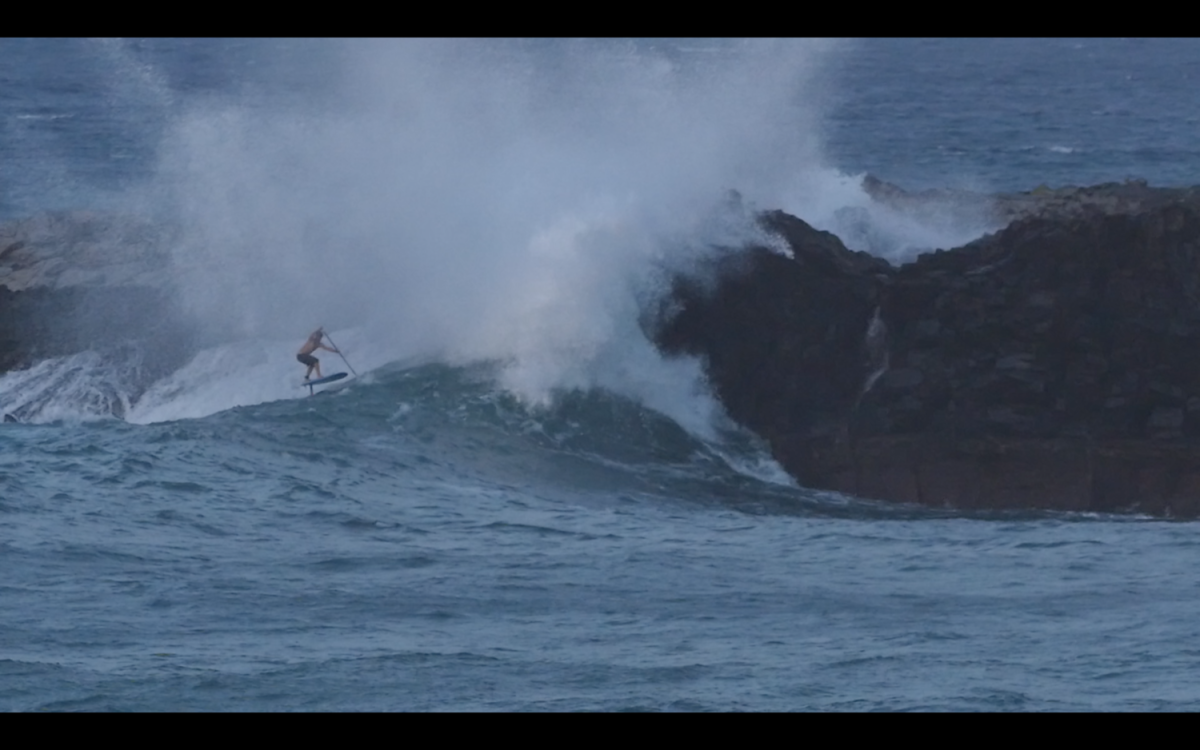MansBrand.com Articles Provided as noted by attribution.
Professional SUP surfer Zane Schweitzer is no stranger to trying conditions on the water. Born and raised on Maui, Schweitzer grew up surfing, windsurfing, and standup paddling. Although the 26-year-old has surfed some of the most intimidating waves on the planet, he recognizes that it’s important to prioritize safety in every situation and that everyone has different limits.
What Kayakers Can Learn From the New York Ferry Collision
Read article>
While your definition of “big” may be vastly different than Schweitzer’s, the skills, techniques, and safety practices needed for a successful session are essentially the same. We caught up with Schweitzer and got some of his top tips for staying safe in big surf and how to not only survive, but thrive, in the impact zone.

Zane is no stranger to hairy situations in the surf zone.Matty Schweitzer
What safety considerations do you take when SUP surfing in bigger surf?
In bigger surf or conditions that are more strong/serious, it’s always a good idea to take extra time with your hazard assessment.
This means taking a moment to be present in our environment and become aware of any elements around us that may help or hinder our time on the water. Things like finding a safe place to enter and exit the water, being aware of the areas over the reef that the waves break most consistently, and understanding the wind and current direction should all be taken note of before entering the water.
It’s also important to bring that hazard assessment over to our equipment check and make sure fin screws are tight and your leash and leash string are solid with no nicks. After taking the time to assess your equipment and conditions on the water, assess yourself—breathe, stretch, have a game plan, and stick to it. If in doubt, don’t go out.
How to Deal With 6 of Surfing’s Nastiest Sea Creatures
Read article>
What’s some advice you can offer for paddling out through heavy surf?
Getting out through heavier surf can be a challenge. A lot of the time, successfully getting out simply takes preparation to find a safe and efficient place to enter the water—ideally with a rip current or channel. You don’t want to be wasting energy going one after another. When you feel that you’re getting stuck in one of these cycles, I find it best just to swim and allow the board to drag behind you until the waves settle down to a lull. Waves aren’t coming in a random order; there is always a frequency you can get familiar with. Going with the flow of the current and energy that is being sent with the waves is key.
Getting up and over a whitewash starts with approaching the wave with perpendicular speed, then stepping back with your foundation foot into your surf stance and planting one paddle stroke at the bottom of the wave while lifting the nose up over the whitewash, followed by a quick stroke to the top of the wave paddling yourself up and over. If I don’t feel confident to make it up and over the whitewash, I will strategically launch my board up and over while avoiding a collision with it when I dive off.
The post How to Paddle Out Through Heavy Surf on a Standup Paddleboard appeared first on MansBrand.
from MansBrand https://www.mansbrand.com/how-to-paddle-out-through-heavy-surf-on-a-standup-paddleboard/?utm_source=rss&utm_medium=rss&utm_campaign=how-to-paddle-out-through-heavy-surf-on-a-standup-paddleboard
via IFTTT
No comments:
Post a Comment